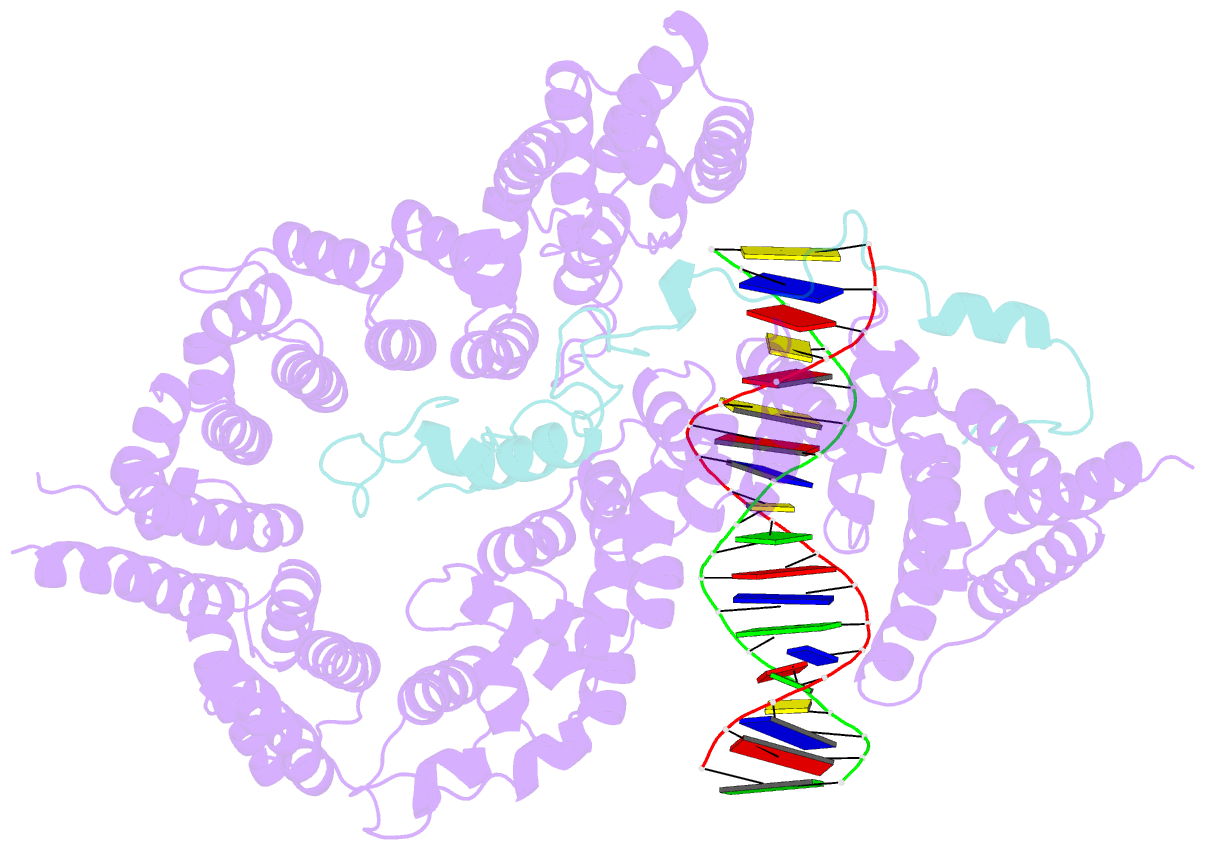Summary information and primary citation
- PDB-id
- 5oqn; SNAP-derived features in text and JSON formats;
DNAproDB
- Class
- cell cycle
- Method
- X-ray (3.15 Å)
- Summary
- Crystal structure of the s. cerevisiae condensin ycg1-brn1 subcomplex bound to DNA (short kleisin loop)
- Reference
- Kschonsak M, Merkel F, Bisht S, Metz J, Rybin V, Hassler M, Haering CH (2017): "Structural Basis for a Safety-Belt Mechanism That Anchors Condensin to Chromosomes." Cell, 171, 588-600.e24. doi: 10.1016/j.cell.2017.09.008.
- Abstract
- Condensin protein complexes coordinate the formation of mitotic chromosomes and thereby ensure the successful segregation of replicated genomes. Insights into how condensin complexes bind to chromosomes and alter their topology are essential for understanding the molecular principles behind the large-scale chromatin rearrangements that take place during cell divisions. Here, we identify a direct DNA-binding site in the eukaryotic condensin complex, which is formed by its Ycg1Cnd3 HEAT-repeat and Brn1Cnd2 kleisin subunits. DNA co-crystal structures reveal a conserved, positively charged groove that accommodates the DNA double helix. A peptide loop of the kleisin subunit encircles the bound DNA and, like a safety belt, prevents its dissociation. Firm closure of the kleisin loop around DNA is essential for the association of condensin complexes with chromosomes and their DNA-stimulated ATPase activity. Our data suggest a sophisticated molecular basis for anchoring condensin complexes to chromosomes that enables the formation of large-sized chromatin loops.





